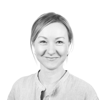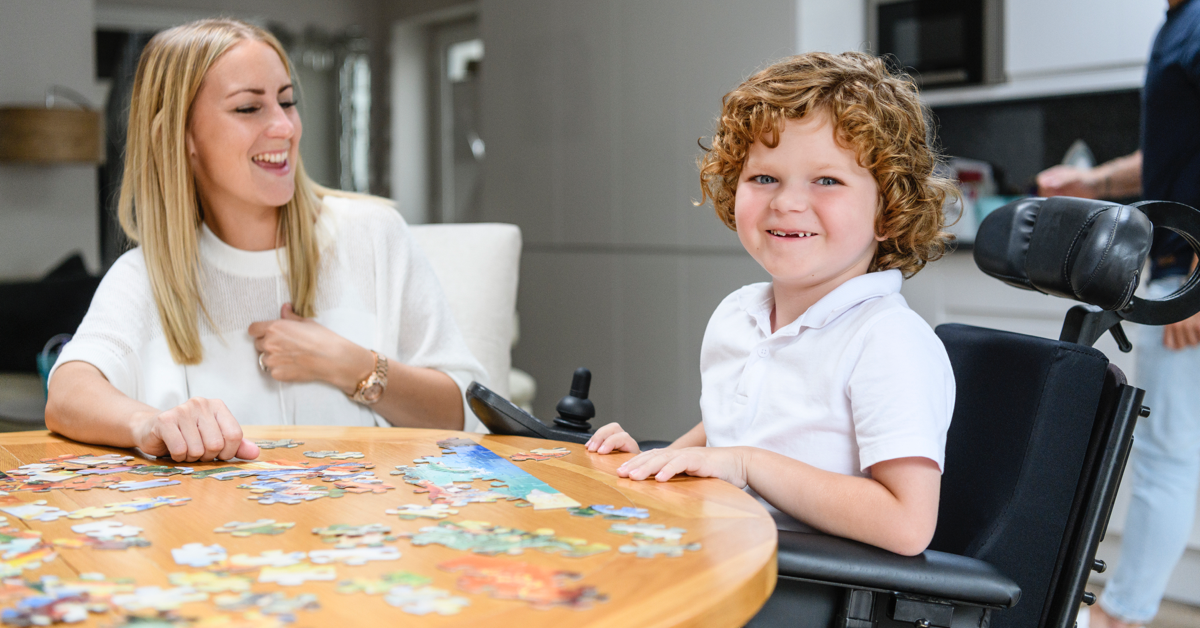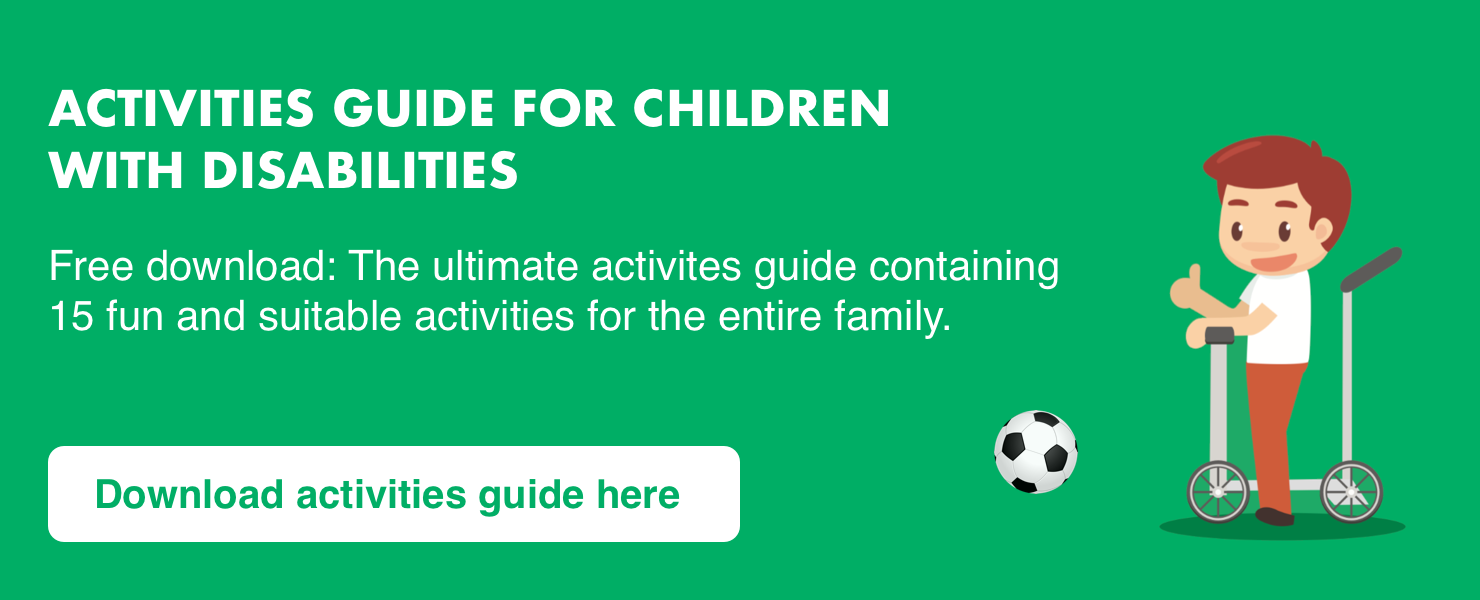What is Duchenne Muscular Dystrophy?


Duchenne Muscular Dystrophy (DMD) is the most common form of muscle disease in children. Unfortunately, it’s also one of the most severe. In this article, we look at causes, symptoms and treatments of DMD.
What does it entail?
Muscular dystrophy is a disease that leads to progressive deterioration of muscle fibres. It’s caused by the body’s inability to produce dystrophin, a protein that’s essential to keep muscles intact. DMD usually develops at an early age and worsens quickly. The gluteal muscles and thighs are usually weakened first, which means the ability to walk is likely to be affected.
Cause
The cause is related to a mutation in the DMD-gene located in the x-chromosome. Boys with this mutation will develop the disease, but girls bearing the gene will only carry the mutation, not develop it.
Research has identified a large number of different mutations in the gene leading to the disease. Still, with ⅓ of the patients, none had a mother carrying the gene. This suggests that these patients have had a spontaneous mutation.
The occurrence of DMD is estimated to be 1 per 3500–6000 newborn boys.

Read more: How Can You Help Your Youth Transition to Adult Healthcare?
The five stages
The progression of DMD is divided into five stages:
Stage one – presymptomatic
Very few get a diagnosis at this stage unless it’s established that someone in the family carries the mutation or if the disease is confirmed with bloodwork. Symptoms are vague and unclear, making it difficult to confirm any suspicions of DMD.
Stage two – early ambulatory
In this stage, symptoms of DMD will become more prominent. The child will often have a wobbly or abnormal gait as well as walking on his toes. For children attempting to stand up, it’s common to use hands to move up their legs for extra support. This characteristic way of standing up is most commonly known as the Gower’s Maneuver. In stage two, the child is able to climb the stairs but will usually use his hands to lift, and support the legs with each step.
Stage three – late ambulatory
At stage three, the child experiences difficulties walking on flat surfaces, climbing the stairs, and transitioning from a sitting to a standing position.
Stage four – early non-ambulatory
During stage four, the child will usually become dependent on a wheelchair. Still, as the upper body strength and posture is adequate at this stage, he will in most cases be able to push the wheelchair without assistance.
Stage five – late non-ambulatory stage
In the last stage of DMD, arms and legs become severely weakened. As a result, the child will have a hard time maintaining a good posture.
Additional difficulties
Children with DMD are likely to experience lung and heart conditions. These conditions usually develop with the loss of ambulation as muscle functions are weakened. This is not due to the disease alone, but also a consequence of inactivity, inappropriate posture and scoliosis. The child may need monitoring and help with the gastrointestinal function, nutrition and ingestion. Children are usually monitored by professionals at this stage, who will assist with medical treatment, guidance, and facilitate rehabilitation.
Medical treatment
There are no curative treatments for DMD, but research supports the use of glucocorticoids (a kind of steroid) to slow down muscle weakness development. By using steroids, the child can maintain the ability to walk independently and postpone any difficulties related to breathing, the heart, and the skeleton.
Read more: Kaja uses Innowalk every day – She's happier and more energized
Rehabilitation
Children with DMD are usually monitored closely by a rehabilitation team consisting of physicians, physiotherapists, occupational therapists, special educators and neuropsychologists, all with in-depth knowledge of muscular diseases.
In addition to the medical treatment, rehabilitation will entail:
Physiotherapy – focus on maintaining muscle extensibility, preventing joint contractures, and maintaining independent motor function as long as possible. This is done by using traditional physiotherapy techniques, assistive devices, and orthoses.
Occupational therapy – focus on assisting the child and the family with assistive devices, such as wheelchairs and bicycles. The therapist can also be a great support for families adapting their home. This can help to ensure the child’s independence and mobility while growing up, as well as decreasing the burden on caregivers.
Psychosocial care – focus on the child’s and family’s psychosocial health by working on social behaviour and interaction, and general mental health. Special educators and neuropsychologists can support the family at home, at school and other places according to needs.
Resources
There are several online resources that can be helpful for families having children with Duchenne. Here are some of our favourites:
-
National Center for Advancing Translational Sciences’ page on Duchenne
- Duchenne.com (intended for US audiences)

Rikke Damkjær Moen brings many years of experience as clinical physiotherapist to the Made for Movement team. Her mission is to ensure that everybody, regardless of mobility problems, should be able to experience the joy and health benefits of physical activity. As our Medical Manager, Rikke is passionate about sharing knowledge so that individuals with special needs, families, and clinicians can discover the possibilities and solutions provided by Made for Movement.
The Innowalk Pro is an excellent end-effector device, providing full-body robotic therapy in standing with weight-bearing. It can be...
Jack Torbett, a paediatric physiotherapist from the Great North Children’s Hospital conducted a small in-service project looking at...
The term neuromuscular diseases refer to a broad category of disorders that affect the muscles due to problems with the nerves and...
Hear from us from time to time and learn new things
